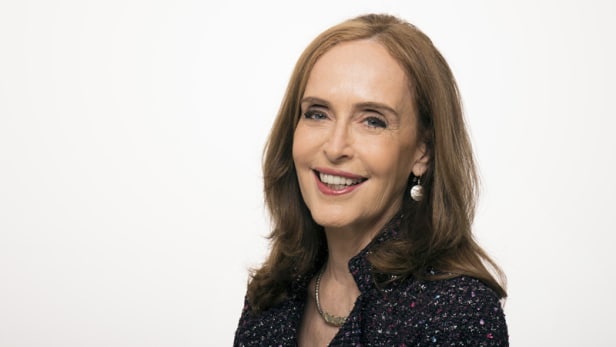By Jennifer Ehidiamen
 |
| Mary Pigozzi, executive director of Educate a Child. Photo by: Educate a Child |
Sometimes the development world creates an opportunity for seemingly strange bedfellows. Such cross-sectoral collaborations between different organizations can then emerge at the forefront of attempts to solve some of the world’s most pressing challenges.
Two groups that have come together to set the pace in this type of partnership are the Education Above All Foundation, a not-for-profit organization that works to increase educational opportunities for underserved communities and fragile states, and Gavi, the Vaccine Alliance, an international organization improving access to new and underused vaccines for children living in the world’s poorest countries.
Their partnership is taking an aim at the Sustainable Development Goals. While Gavi is focused on the third goal, “which aims to ensure healthy lives and promote well-being for all,” EAA targets the fourth goal of ensuring “inclusive and equitable quality education.” Both are linked toward achieving Goal 17, which aims “to revitalize the global partnership for sustainable development.”
“By working together, we can really increase the impact of the work of each of us and our partners on the ground,” said Mary Pigozzi, executive director of Educate a Child, one of EAA’s programs.
About 58 million children are out of school globally, of which 19 million did not receive full vaccines in 2015, according to data by World Health Organization. This partnership is the first of its kind that would specifically target increasing access to both immunization and education for vulnerable children in countries in Africa and Asia.
Devex talked with Pigozzi to gain insight on the new partnership model.
Tell us how this EAA/Gavi partnership would work.
Gavi is a global initiative to increase immunization around the world and EAA is a foundation that focuses on education in the most marginalized [communities] and within that, Educate a Child is a program that focuses on out-of-school children globally. So between us and Gavi, we are both focusing on the most marginalized of children around the world. What we plan to do is to join forces so that in effect we can influence both the health and educational outcomes of children who are by definition among the most vulnerable in the world.
What would be your approach in terms of implementation and resource distribution?
As this is a brand new partnership, we are going to just focus on countries where both organizations have particular interests. These countries are the ones that, for EAC, have highest numbers of out-of-school children at the primary level. For Gavi, these countries have very high numbers of children who are not immunized. Our approach is to go to to the places where the data show that the numbers are high. That is there are lots of children without education and who are also not immunized.
What are some of the barriers hindering children from being reached in these communities?
There are many barriers that children face. They begin with things as simple as distance from school, the cost of education, the language the children speak might be a different language that the majority speak in the country, gender, children with disabilities often face greater challenges than children who don’t have disabilities. We also know children who are on the move, whether it being children from nomadic families or refugees and internally displaced children are often the hardest to reach with either education or with a good immunization program. And if you think of both immunization and education, what you’ll realize is that it is not a quick fix.
How will this cross-sectoral partnership model be sustained?
I think for EAC and EAA, and I’m sure also for Gavi, this is not the first time we’ve worked across sectors. For us however, as EAC, this is the first time we’ve had a global partnership with a single partner in a different sector. So we see that as an important step. What we want to do with this partnership is to work with existing partners on the ground and to leverage resources so that we’ll have a bigger impact on the lives of children.
What would you recommend to other organisations also considering similar partnerships?
It is a win-win not just in the short run, but also in the long run in terms of the development outcome. Every community and context is a little bit different but there are also similarities. I don’t think we would see ourselves having a single recipe. We would really leverage the resources of both education and health to actually make a difference. What we do know is that in the long run, education results in better health outcomes across the board. We also know improved health means it is just easier for children to learn because they are healthy. We are very excited about the partnership. We are hopeful that this would perhaps encourage other organizations like us to go public and try to really weave together the different SDGs in work that can make a difference because ultimately that is what the global community committed to when they signed on to the SDGs.

No comments:
Post a Comment